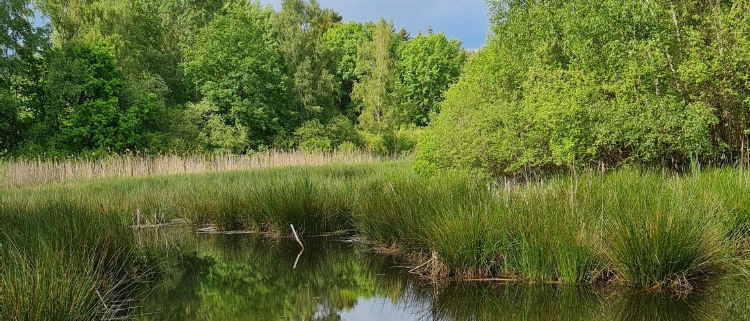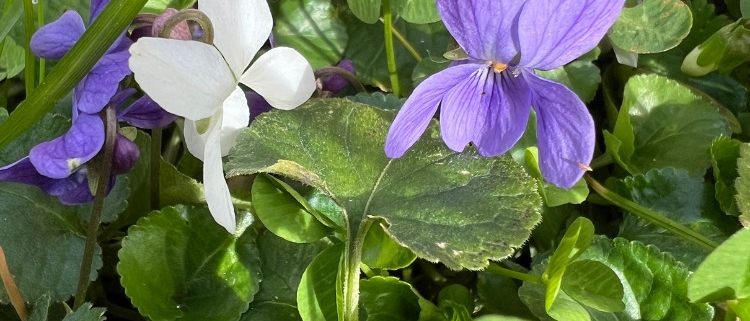Diversity of life – Habitat diversity
Biodiversity – The Series
The three main aspects of biodiversity are species diversity, the genetic diversity of a species and the diversity of habitats in a region. We cover all those aspects in dedicated articles. In this one, we take a closer look at how important it is to have multiple habitats in a given area.
What does habitat diversity mean?
Habitat diversity is a metric of how many different habitats are present in a given area. For example, an area where a naturally flowing stream separates a woodland fringe from a meadow may have a high structural diversity. A large arable field without hedges or wildflower strips, on the other hand, does not have a high diversity of habitats. A high diversity of habitats automatically increases the species diversity of the area, as each of these biotopes has its own biocoenosis and therefore a single area can be colonized by more species.
Loss of habitats
Humans bear the main responsibility for the destruction of habitats through the use of natural resources, air, light and water pollution, noise pollution, intensive agriculture, industrial production and the progressive urbanization of landscapes. Other influential human activities include mining, deforestation and trawling. Eutrophication, the excessive input of nitrogen and phosphorus into ecosystems and the atmosphere, has a global impact. In the long term, this nutrient input leads to nutrient-poor habitats losing their unique and species-rich character and becoming increasingly similar to other locations.
However, abiotic environmental factors can also (indirectly) contribute to the destruction of habitats. These include geological processes such as volcanism, climate change, and the spread of invasive species.
Invasive species take over habitats
Habitat destruction in an area can lead to a shift in local biodiversity from a mix of generalists and specialists to a population consisting mainly of generalists. Invasive species are often generalists because they can survive in a much wider variety of habitats than specialists. If these invasive species, which are particularly prolific, colonize ever larger habitats in an area, there is less and less room for the few specialists originally native to the area. As a result, the so-called extinction threshold of the specialists shifts ever further into a fatal direction – and the probability of their extinction increases.
Loss of biodiversity
Habitat destruction is the biggest driver of species loss and the loss of genetic diversity within species. And this is not just about the loss of large and popular animals such as the giant panda. Species such as nematodes, mites, earthworms, fungi and bacteria carry out many of the processes that are essential to human life, such as purifying air and water, and they too disappear when their habitats are destroyed. At a higher level, plants not only provide structural diversity and protection against erosion, but also energy and nutrients, which are then processed by other creatures in the food chain.
Example: Deadwood
A “well-tended and tidy” (managed) forest is often one from which wood is harvested before it can die. However, this means that the forest habitat is missing something that was originally an integral part and has been able to develop and optimize itself over thousands of years – a hotspot of biodiversity: under the bark of dead trees, starch, sugar, vitamins, proteins, amino acids and cellulose are waiting to be decomposed by longhorn beetles and bark beetles, wood wasps and thousands of often highly specialized insects and fungi. Their bore dust, excrement and moulting residues attract new wood colonizers – by the way, different ones in lying than in standing dead wood. Bats, owls and dormice use dead wood as a hibernation camp or roost, while other organisms – plants, fungi, woodlice, mites and worms – complete the decomposition process. What remains is a large amount of humus, the perfect basis for new growth.
Biodiversity
The example of deadwood shows impressively that countless habitats and processes have already been changed and destroyed so quickly by humans that entire groups of organisms have become extinct or their survival is acutely threatened. However, knowledge of the interrelationships and daily efforts to preserve and restore habitats can make the difference between preserving a diversity of habitats, of species and the diversity within these species in your own town, village or garden.
This article was featured as a story in the Flora-Incognita app in spring 2024. In this plant identification app, you can find exciting information about plants, ecology, species knowledge, and tips and tricks for plant identification. Check it out!




